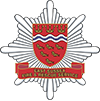What is an Automatic fire alarm (AFA) versus an Unwanted fire alarm signal (UwFS)?
- An AFA is a system that warns people of a possible fire by automatic means such as a detector or manual means such as by a call point. This is very different to an unwanted fire signal.
- Whenever an alarm has activated for a reason that is not a fire, it is a false alarm. If the fire and rescue service have attended the premises for this false alarm it is subsequently classified as an Unwanted Fire Signal (UwFS)
Inevitably, this causes significant disruption to our training, fire safety and community safety work and, crucially, while firefighters are investigating the cause of the alarm, they cannot attend emergencies where lives are at risk.
Because of this, we no longer attend any fire alarms operating in low-risk commercial premises at any time unless we receive telephone confirmation that there is a fire. Low-risk premises remain classified as premises with no sleeping risk, such as offices, shops, factories, pubs, schools, clubs and restaurants.
What you need to do
If you are the ‘responsible person’ and have a legal responsibility to manage the fire protection measures in a building, and failure to do so competently can lead to prosecution under the Regulatory Reform (Fire Safety) Order 2005.
Where necessary, this includes making sure that the appropriate fire-fighting equipment, detectors and alarms are fitted and that the premises, facilities, equipment and devices are maintained in an efficient state, of working order and good repair in order to safeguard the safety of people on the premises.
The responsible person must also, where necessary, nominate a competent person to implement these measures.
If you are not sure where to start, read our information about Risk Assessments.
Minimum Actions
We would like you to manage your fire alarm system so that when the premises is occupied the Fire and Rescue Service is only called when there is a fire to avoid false alarms receiving an unnecessary emergency response.
There are a number of ways you can do this and the following should be considered as a minimum:
1) Review your Fire Risk Assessment and emergency plan
- You may need to adapt it to include an investigation period for a physical check of the area identified on the fire alarm panel and zone plan, raising the alarm by calling 999 if there is a fire or resetting the system if there is a false alarm.
- Consider how to include and manage situations and times where a member of staff may be lone working.
- Ensure all your staff are trained and know to phone 999 if there is a confirmed fire or smoke.
- Some specific additional training for fire wardens / fire marshals might be required. Knowing how and when they communicate to the occupiers and when it is safe to return to the building will become part of their role.
- Consider feast days and holidays that don’t occur on national bank holidays or weekends when your business may be closed or unoccupied. Ensure your Alarm Monitoring Organisation has this information to pass to East Sussex Fire and Rescue Service.
- Ensure your Fire Action Notices are updated with any new arrangements.
2) Update your alarm companies and insurers
- Contact your competent alarm maintainer. Ask their advice on setting up your fire alarm for the change in response e.g. day/night mode, investigation, coincidence detection etc.
- Contact your insurance provider to ensure your cover is adequate for the change. There shouldn’t be any change but best to check.
- Contact your Alarm Monitoring Organisation to ensure they are aware of the changes and have up to date site contact details to verify any fire alarm signals received in normal working hours.
3) Start learning
- Reducing unwanted fire signals will not necessarily reduce the number of false alarms and we know that, even if we never attend, your staff could become complacent.
- Speak to your fire alarm maintainer about solutions to false alarm issues.
- Ensure you consider the fire alarm management during building and decorating works and hot works.
- Examine previous activations to see if any changes might be beneficial in reducing the number of unwanted fire signals.
For example, a smoke detector positioned outside the changing rooms of a gym is set off regularly due to steam from the showers.
Staff and gym users may start to ignore the alarm and staff may reset the system without checking the cause.
There is therefore the potential for a fire to spread unchecked.
